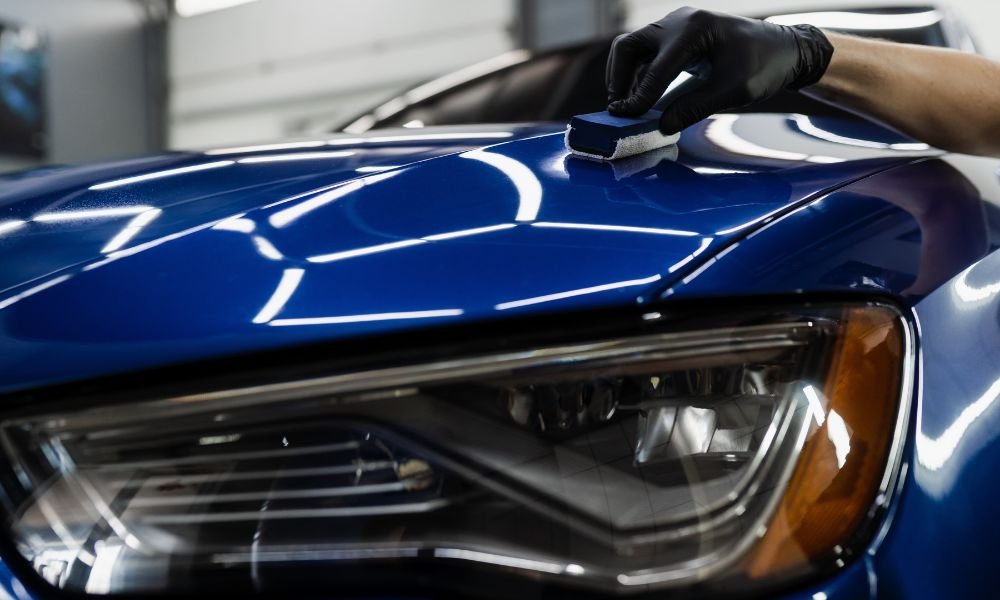Specialist Techniques Used in Ceramic Coating Philadelphia for a Perfect End up
Specialist Techniques Used in Ceramic Coating Philadelphia for a Perfect End up
Blog Article
Why Ceramic Coating Is the Ultimate Option for a Perfect Complete
Ceramic coating has become a leading service for those seeking a perfect surface for their vehicles, thanks to its amazing longevity and protective features. This advanced liquid polymer not only bonds flawlessly with manufacturing facility paint yet additionally offers a powerful barrier versus usual risks such as scratches, UV rays, and toxic wastes. Furthermore, its hydrophobic residential or commercial properties simplify upkeep while boosting visual allure. Recognizing how this innovation compares to standard methods and discovering its application nuances can disclose also much more concerning its value. What elements really set ceramic finish apart?
What Is Ceramic Coating?

When used appropriately, ceramic covering produces a hydrophobic surface that repels water and dust, making it easier to clean and keep. Unlike conventional waxes or sealants, which normally offer short-term defense, ceramic coatings can last for a number of years, depending on the product quality and application technique. The process of applying ceramic finishing requires careful prep work, consisting of complete cleansing and in some cases repaint adjustment, to guarantee optimum bonding and efficiency.
Ceramic layers are not limited to vehicle surfaces; they can likewise be made use of on various products, consisting of glass, steel, and plastics, giving a versatile solution for improving security. In general, ceramic coating stands for a substantial improvement in surface defense modern technology, combining both aesthetic and functional advantages for a vast array of applications.
Benefits of Ceramic Coating
While numerous surface area protection options exist, the advantages of ceramic finish stand apart because of its one-of-a-kind buildings and long-lasting performance. Among the main benefits is its extraordinary sturdiness. Ceramic Coating Philadelphia. Unlike standard wax or sealers that require frequent reapplication, ceramic coverings offer a resilient layer that can last for several years, dramatically decreasing upkeep initiatives
One more noteworthy benefit is boosted protection against ecological impurities. Ceramic coverings develop a hydrophobic surface area that drives away water, dirt, and various pollutants, making it easier to clean. This feature not just preserves the car's appearance however likewise minimizes the risk of corrosion and oxidation, especially in severe weather problems.
In addition, ceramic finishes offer premium resistance to UV rays, preventing fading and deterioration of paint gradually. This UV defense is essential for keeping the visual value of automobiles and surface areas exposed to route sunlight.
Furthermore, the glossy surface achieved with ceramic layer boosts the overall aesthetic charm, offering surface areas a showroom-quality sparkle. Generally, ceramic coverings represent a significant innovation in surface protection technology, giving long-lasting advantages that satisfy both aesthetic and practical needs.
How It Functions
Comprehending the science behind ceramic finishings reveals just how they offer such impressive security and long life. At its core, a ceramic covering is a liquid polymer that chemically bonds with the vehicle's manufacturing facility paint. This bonding produces a safety layer that is both oleophobic and hydrophobic, repelling water, dust, and oil. The primary element of most ceramic finishings is silicon dioxide (SiO2), which is originated from quartz. This compound adds to the coating's solidity and resistance to scrapes, UV rays, and environmental pollutants.
The application procedure includes multiple actions, consisting of surface prep work, which is crucial to accomplishing optimal adhesion. As soon as applied, the covering undergoes a curing process, throughout which it solidifies and forms a semi-permanent bond with the paint surface area. This bond is what identifies ceramic layers from traditional waxes and sealers, supplying a longer-lasting protective obstacle that can endure for several years.
Additionally, the thickness of the finishing can improve its protective top qualities, making certain that it can withstand extreme problems. Eventually, the science of ceramic coatings combines innovative products with innovative application strategies to supply an exceptional level of protection and visual enhancement for vehicles.
Contrast With Traditional Approaches
When contrasted to traditional paint security methods such as sealers and waxes,The benefits of ceramic layers end up being specifically apparent. While waxes supply a short-lived luster, typically lasting a few weeks to a couple of months, ceramic finishes provide a resilient safety layer that can endure for numerous years. This sturdiness significantly decreases the regularity of reapplication, making ceramic layers a more wikipedia reference cost-effective solution in time.
Furthermore, conventional techniques usually require considerable prep work and numerous applications to achieve a satisfying degree of defense. On the other hand, ceramic layers bond at a molecular degree with the vehicle's surface, creating a robust guard versus ecological impurities like UV rays, acid rainfall, and roadway salts. This bond enhances the car's resistance to scrapes and swirl marks, which prevail with conventional waxes and sealers.
Additionally, the hydrophobic residential properties of ceramic layers ward off water and dust, bring about easier cleansing and maintenance. In contrast, wax and sealant-treated surfaces can attract gunk, demanding even more regular cleaning - Ceramic Coating Philadelphia. Overall, ceramic finishes not only give premium security however likewise supply an extra visually enticing and long-lasting surface, developing them as the favored option for discerning lorry owners
Application and Maintenance Tips

Utilizing a foam applicator, use the covering in tiny areas, following the producer's standards pertaining to thickness and overlap. Allow adequate treating time in between layers, typically 1 day, to ensure appropriate bonding. After application, it is important to avoid exposure to water or severe components for at the very least a week to allow the coating to fully treat.
In addition, making use of a ceramic upkeep spray can improve the coating's hydrophobic buildings and longevity. Normal evaluations for any signs of wear will help preserve the finishing's stability and protect that immaculate surface.
Final Thought
In final thought, ceramic covering arises as a remarkable option for attaining a remarkable automotive coating. By forming a robust bond with factory paint, ceramic coating properly guards against scrapes, UV rays, and ecological impurities.

Report this page